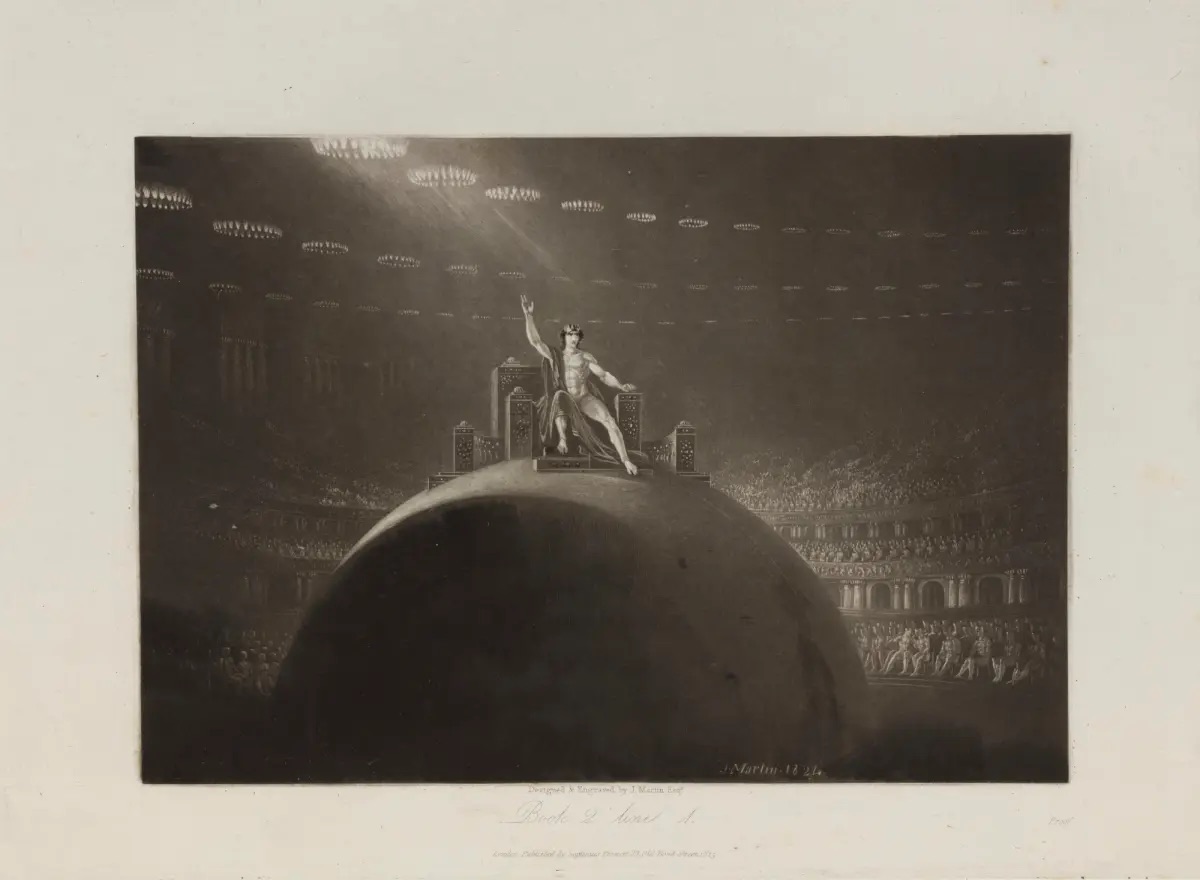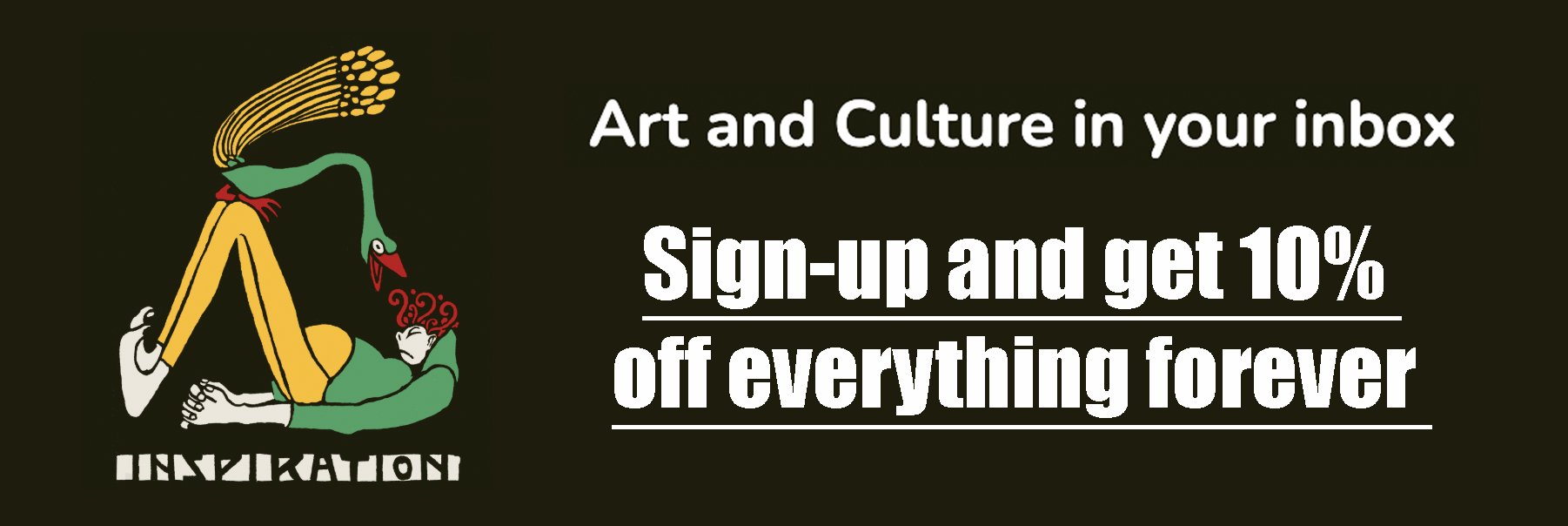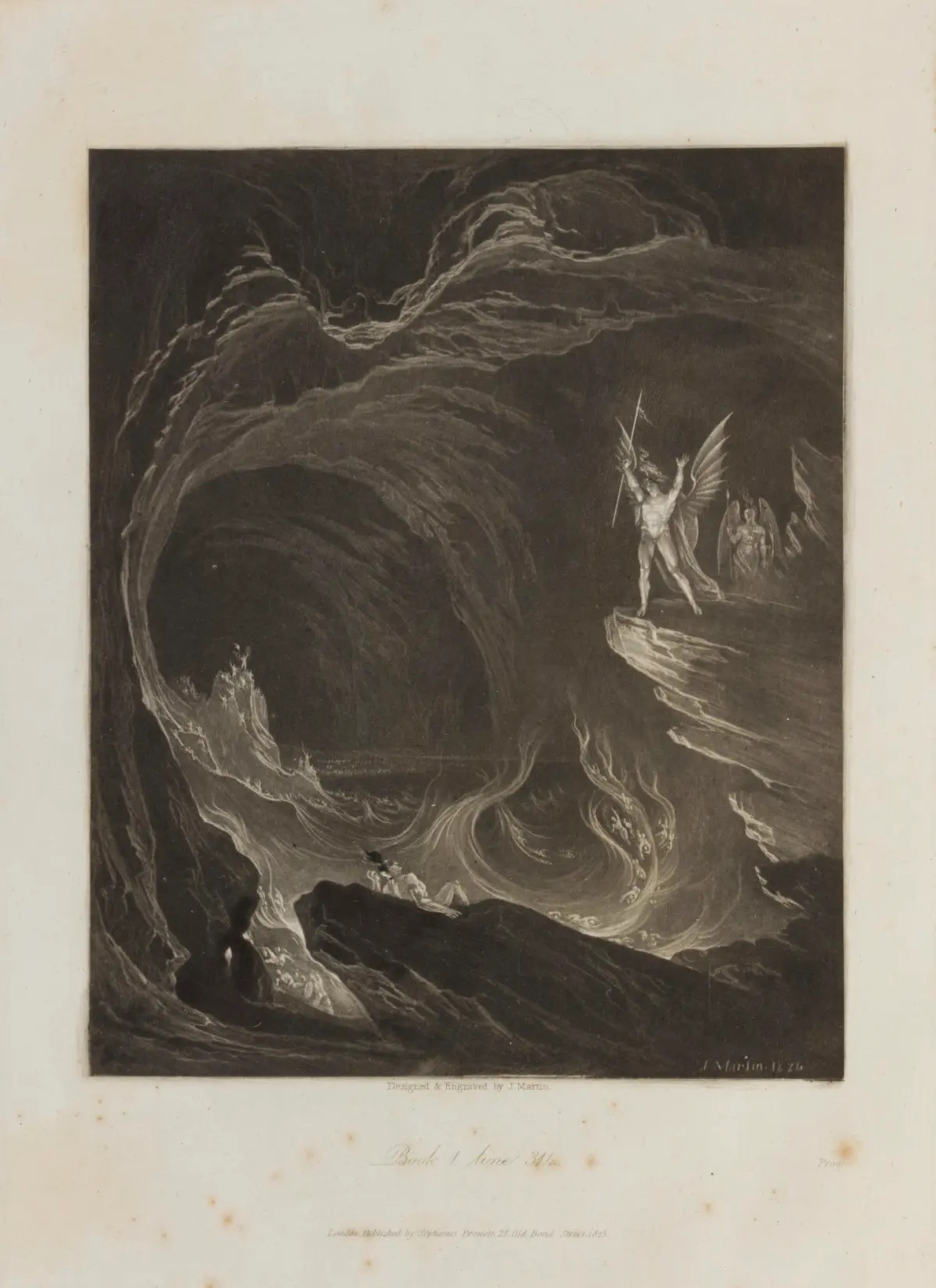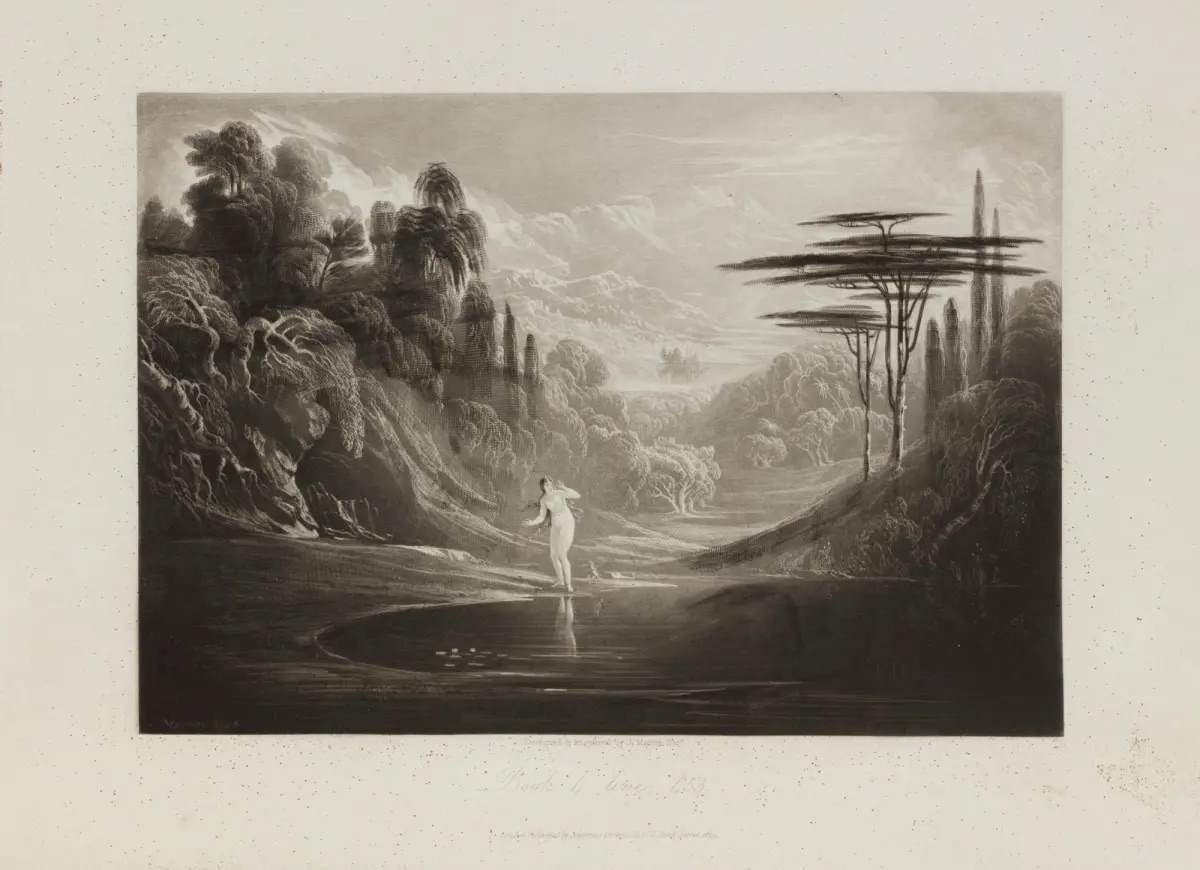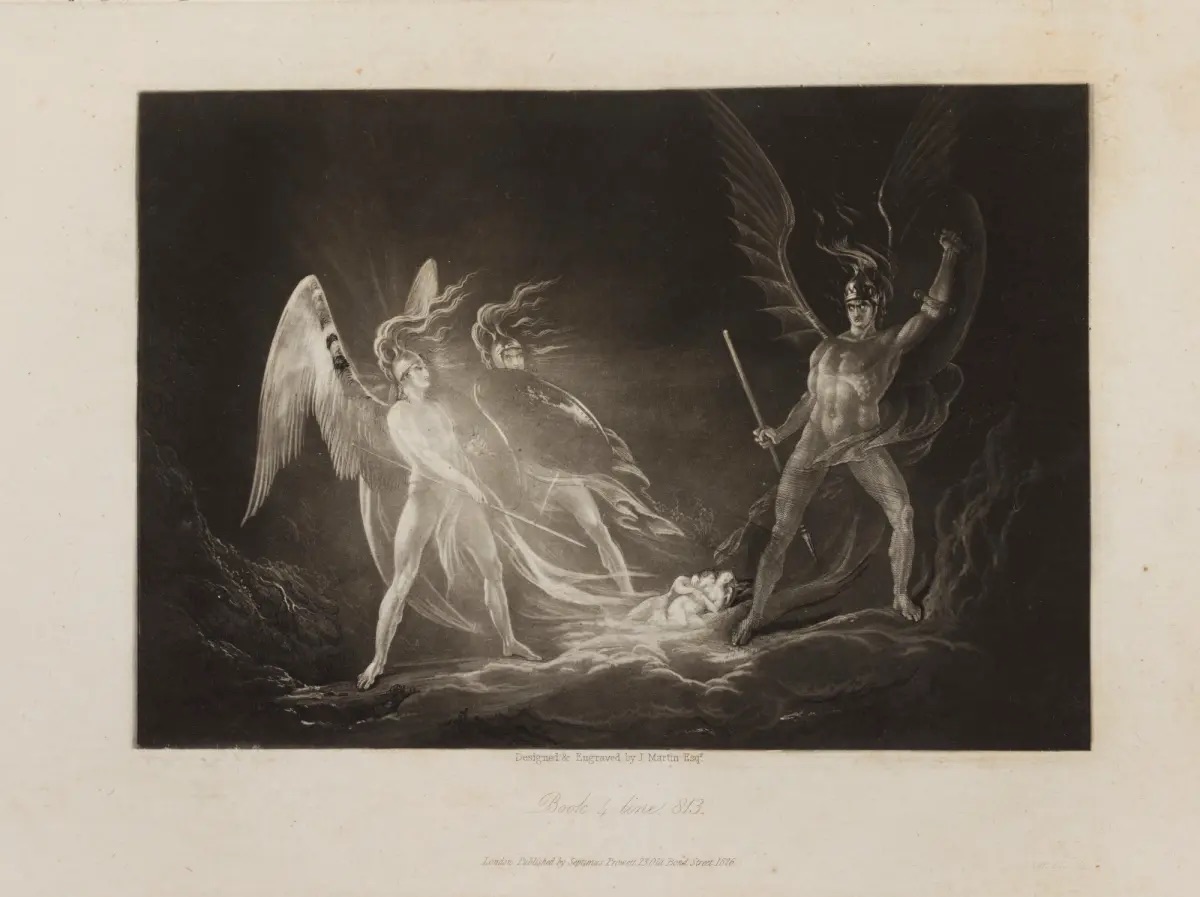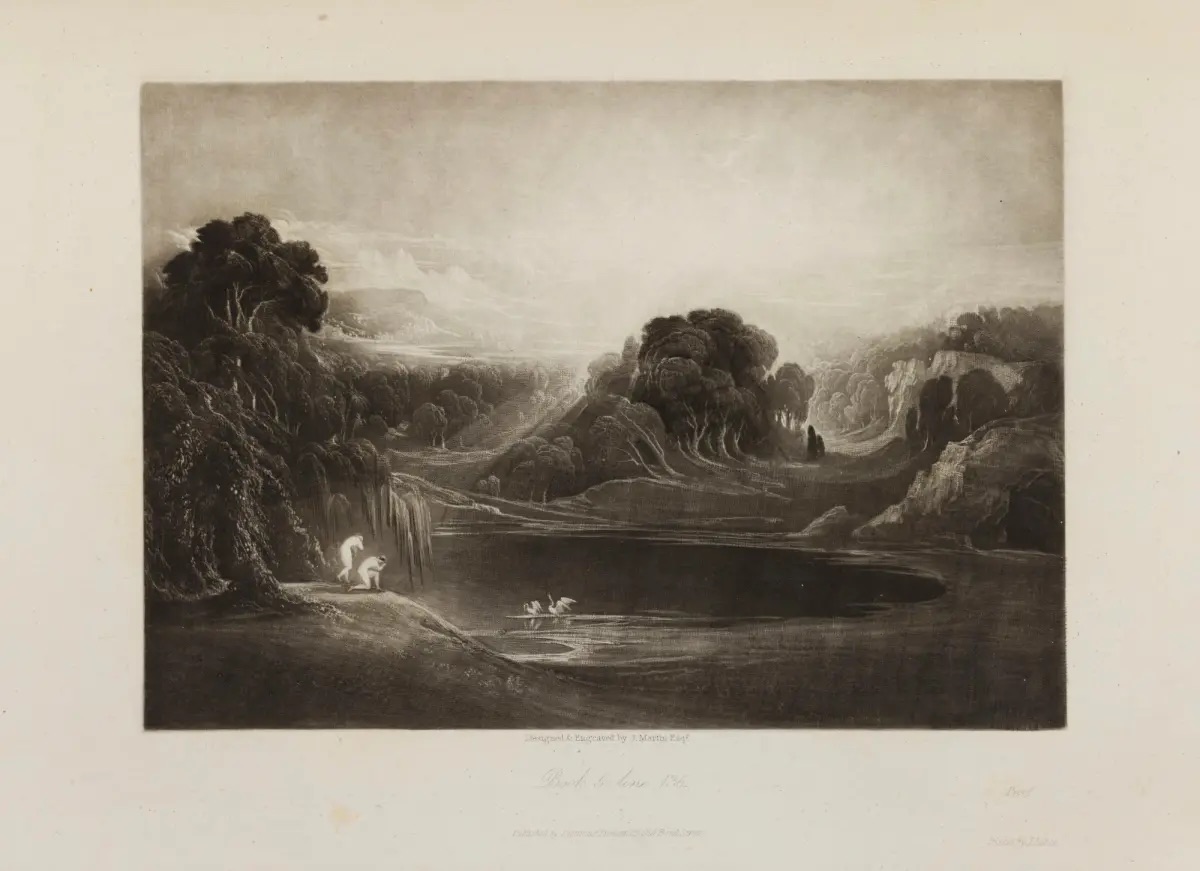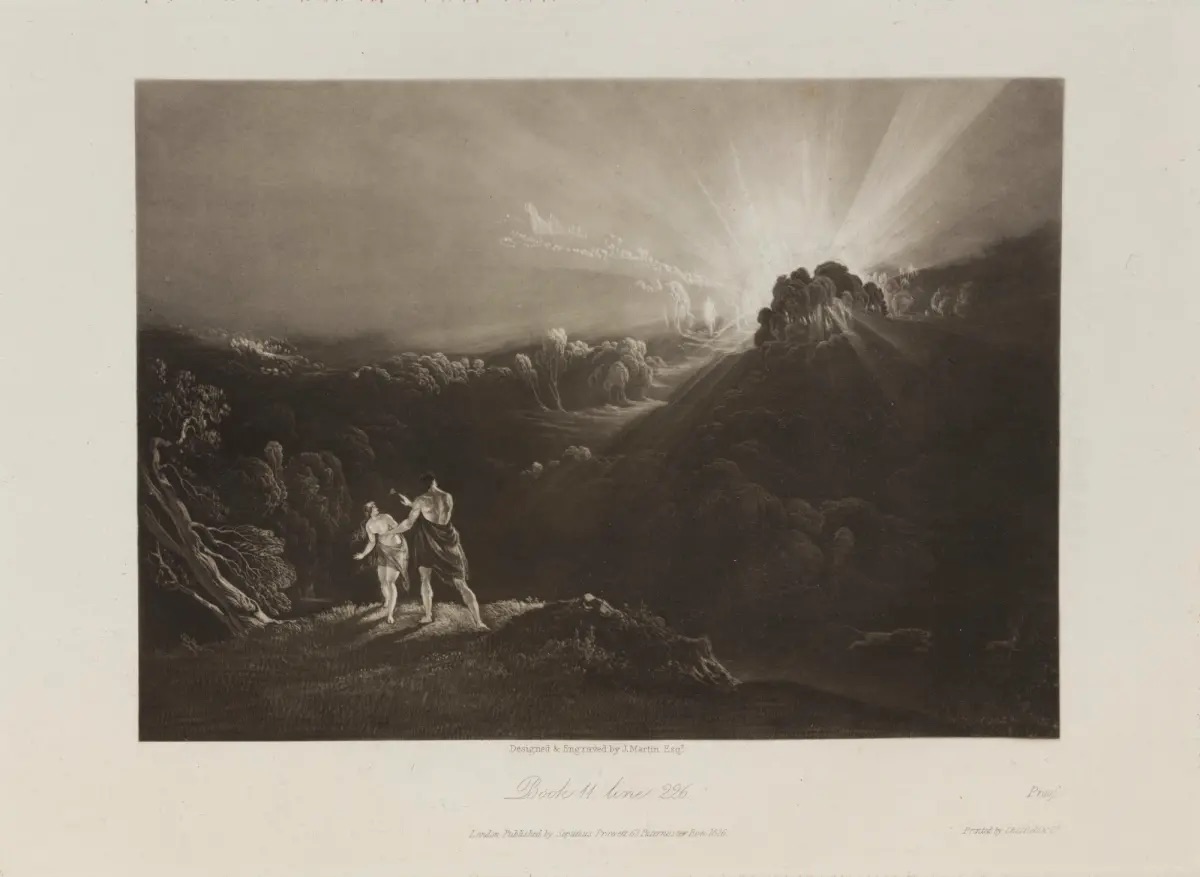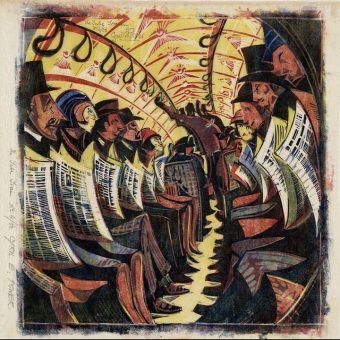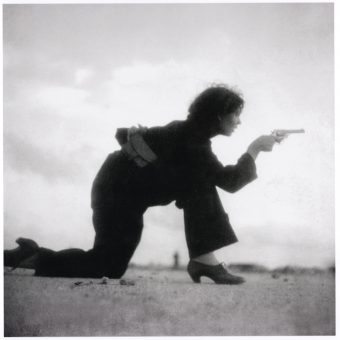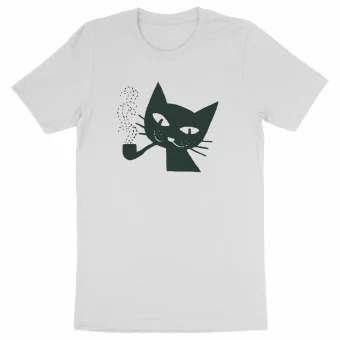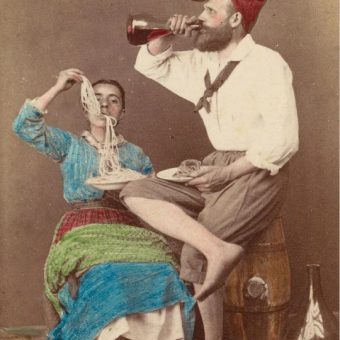“Of Man’s First Disobedience, and the Fruit Of that Forbidden Tree, whose mortal taste Brought Death into the World, and all our woe”
– The opening lines to Paradise Lost by John Milton, illustrated by John Martin
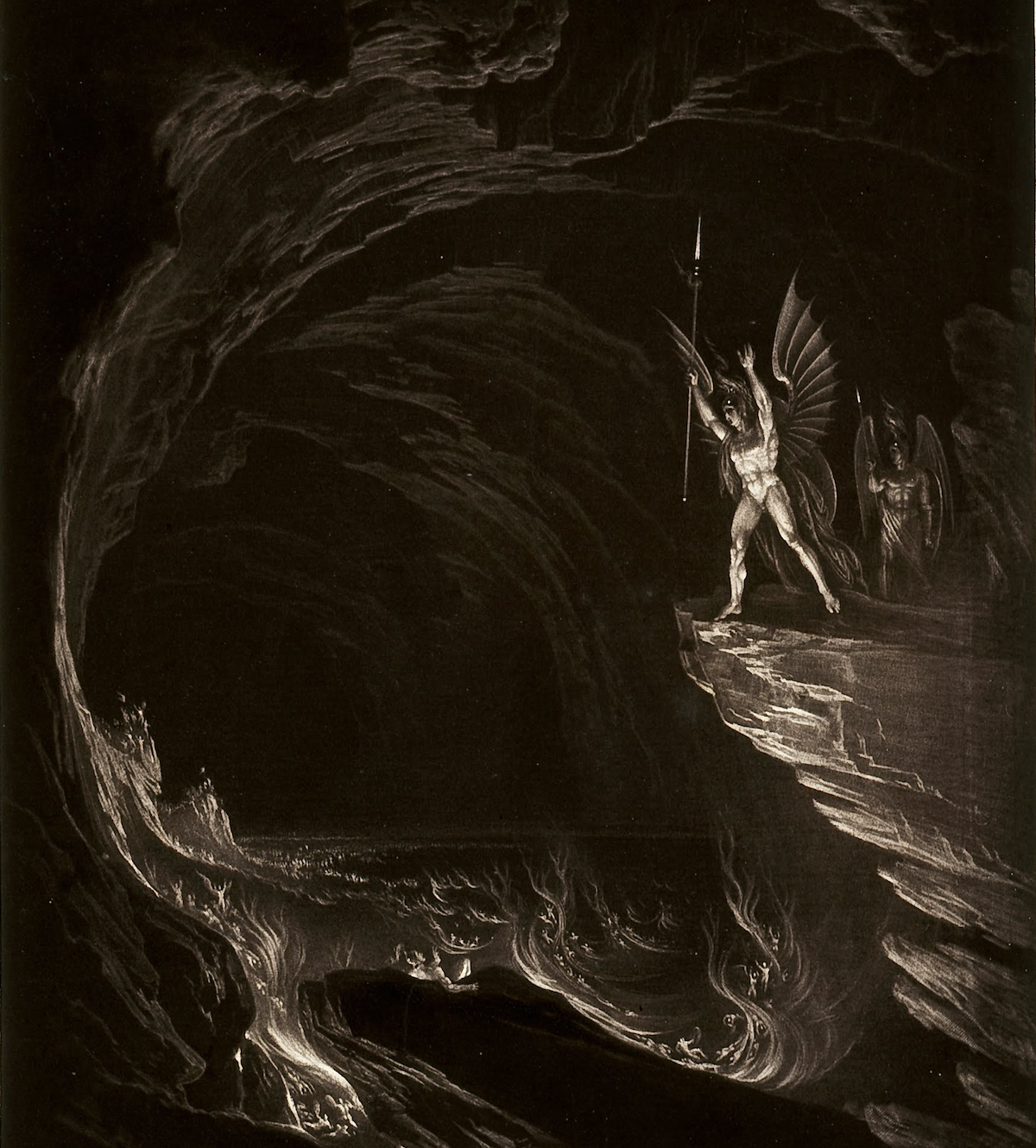
John Milton’s (9 December 1608 – 8 November 1674) epic poem Paradise Lost (1667) is the English writer’s take on the story of Creation from primordial Chaos, and the Fall of Adam and Eve whose disobedience in eating from the Tree of Knowledge brings death to Earth. Narrated in muscular blank verse, the oldest story takes readers on a visionary journey to Heaven, Hell and Paradise.
There are angels and the first couple waiting for God as shafts of glorious light illuminate the darkness. But the star is Satan, the charismatic anti-hero who has all the best scenes:
In the introduction to a 21st Century edition of Paradise Lost, the writer Philip Pullman notes:
A correspondent once told me a story — which I’ve never been able to trace, and I don’t know whether it’s true — about a bibulous, semi-literate, ageing country squire two hundred years ago or more, sitting by his fireside listening to Paradise Lost being read aloud. He’s never read it himself; he doesn’t know the story at all; but as he sits there, perhaps with a pint of port at his side and with a gouty foot propped up on a stool, he finds himself transfixed.
Suddenly he bangs the arm of his chair, and exclaims “By God! I know not what the outcome may be, but this Lucifer is a damned fine fellow, and I hope he may win!”
Which are my sentiments exactly.
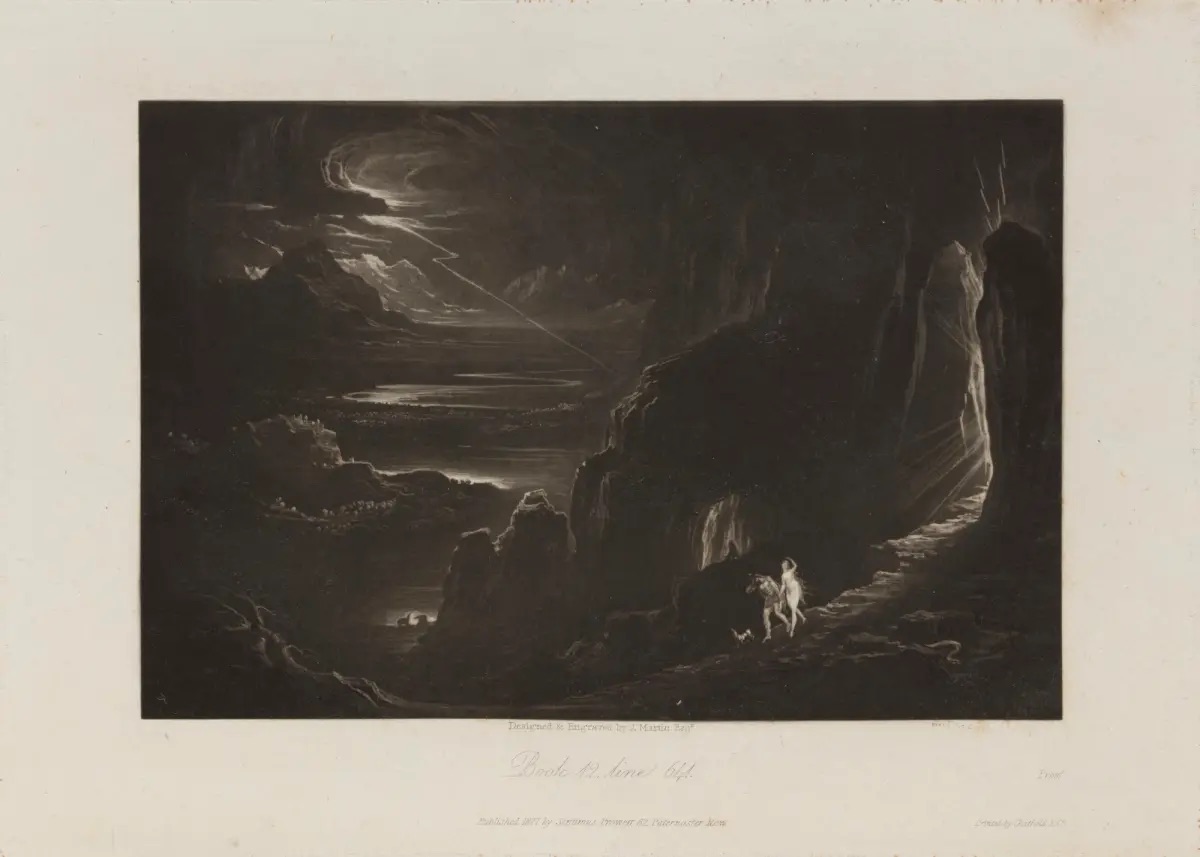
Adam and Eve leave Paradise
Many years after Milton’s epic poem was first published, in 1824 the publisher Septimus Prowett commissioned artist John Martin (19 July 1789 – 17 February 1854) to produce a series of mezzotint illustrations to illustrate their new version. Hired for the huge sum of 2,000 guineas, Martin’s prints were published by subscription, in 12 monthly parts each containing two mezzotint prints and a section of text which when reader had collected them all could be bound to create a completed volume. The final instalment appeared in 1827.
Martin is one of a list of notable artists to have illustrated the work. Some of the most notable illustrators of Paradise Lost include William Blake, Gustave Doré, and Henry Fuseli.
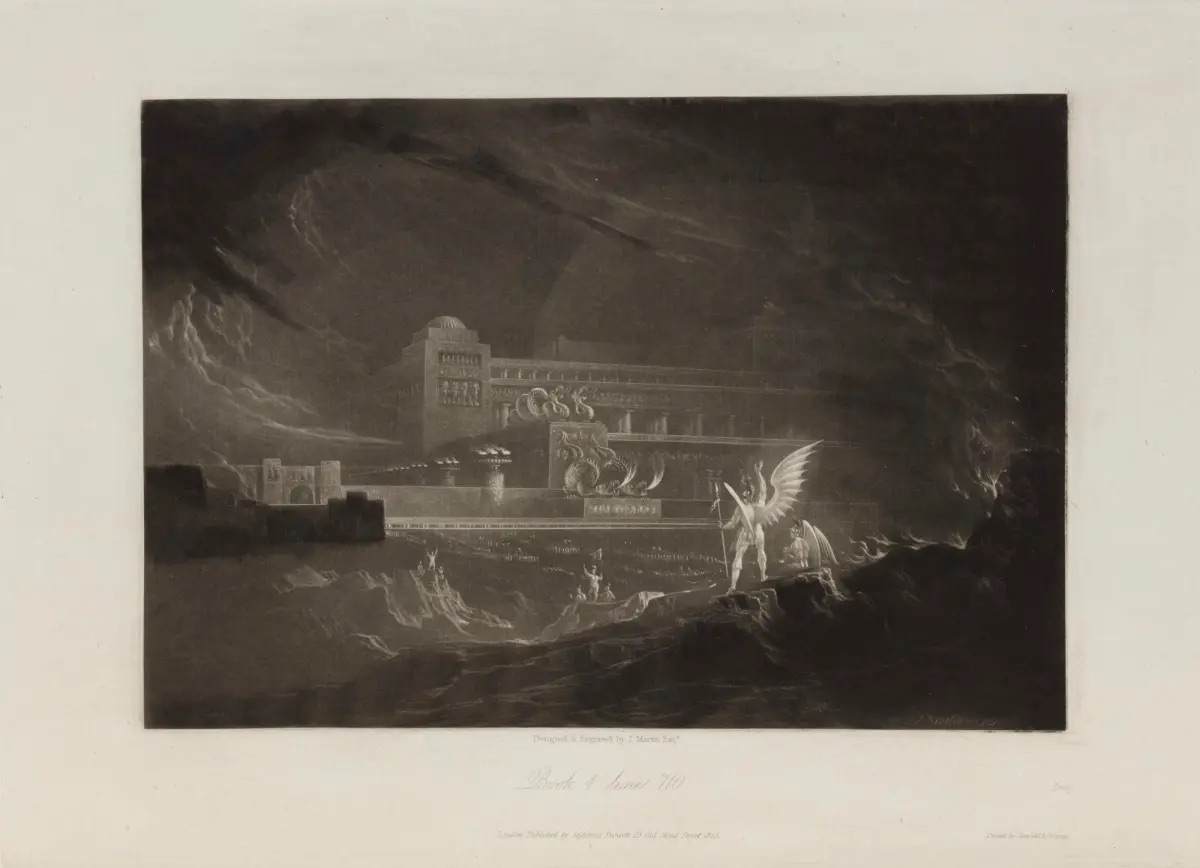
The emergence from the ground of Pandaemonium, Satan’s palace
Milton, who was blind when he wrote much of the poem and so dictated it to different scribes including his daughter, Deborah, explain why he opted to write Paradise Lost in unrhymed iambic pentameter:
The Measure is English Heroic Verse without Rime, as that of Homer in Greek, and Virgil in Latin; Rhime being no necessary Adjunct or true Ornament of Poem or good Verse, in longer Works especially, but the Invention of a barbarous Age, to set off wretched matter and lame Meeter; grac’t indeed since by the use of some famous modern Poets, carried away by Custom, but much to thir own vexation, hindrance, and constraint to express many things otherwise, and for the most part worse then else they would have exprest them. Not without cause therefore some both Italian, and Spanish Poets of prime note have rejected Rhime both in longer and shorter Works, as have also long since our best English Tragedies, as a thing of itself, to all judicious ears, triveal, and of no true musical delight; which consists onely in apt Numbers, fit quantity of Syllables, and the sense variously drawn out from one Verse into another, not in the jingling sound of like endings, a fault avoyded by the learned Ancients both in Poetry and all good Oratory. This neglect then of Rhime so little is to be taken for a defect, though it may seem so perhaps to vulgar Readers, that it rather is to be esteem’d an example set, the first in English, of ancient liberty recover’d to heroic Poem from the troublesom and modern bondage of Rimeing.
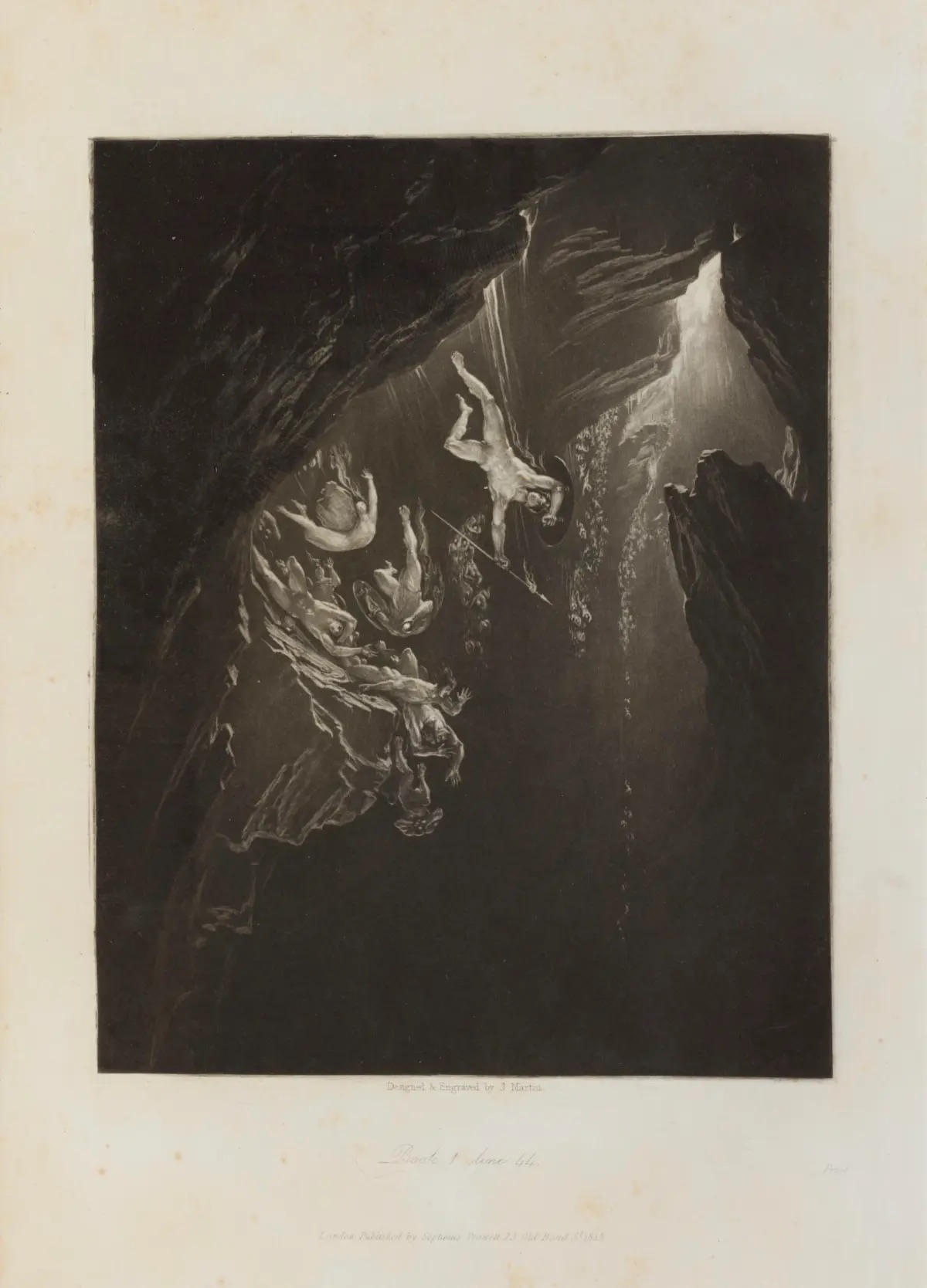
Satan expelled from Heaven, 1825
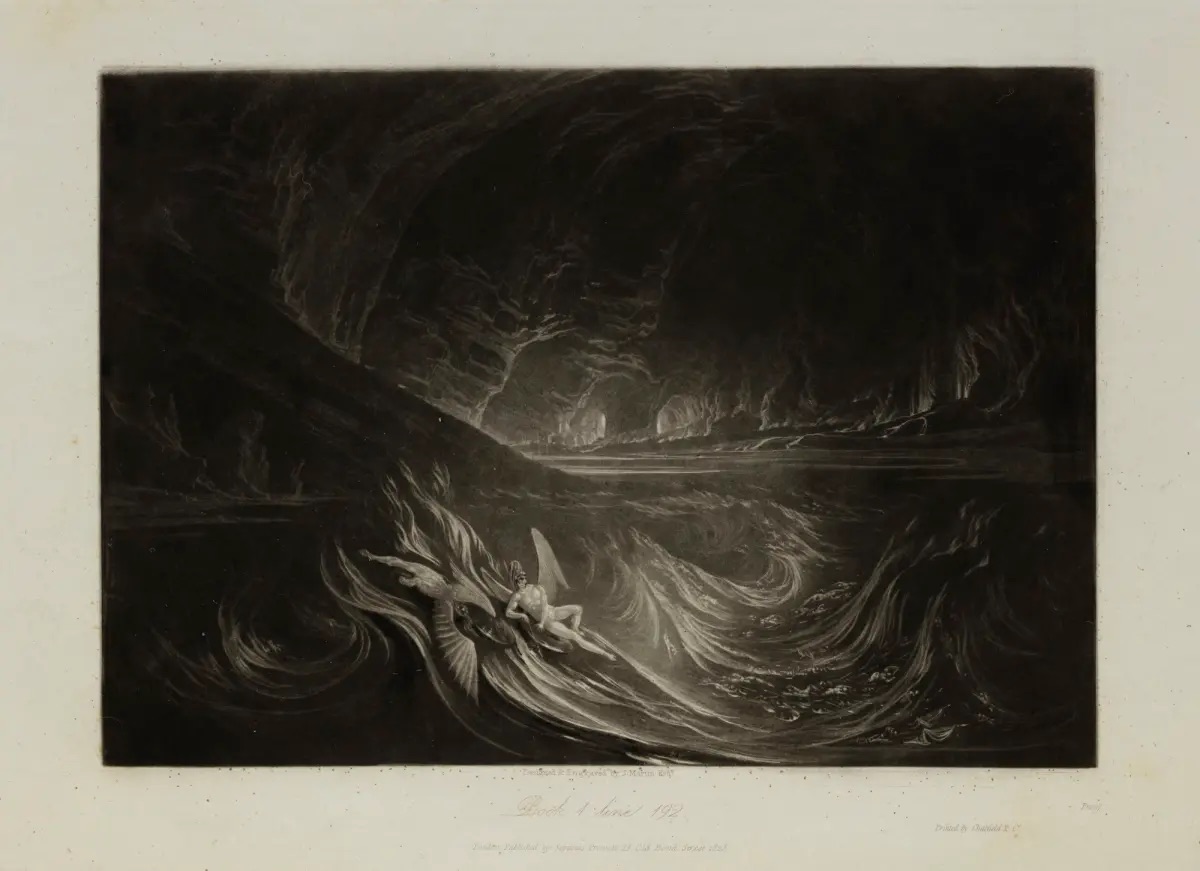
Satan on the burning lake
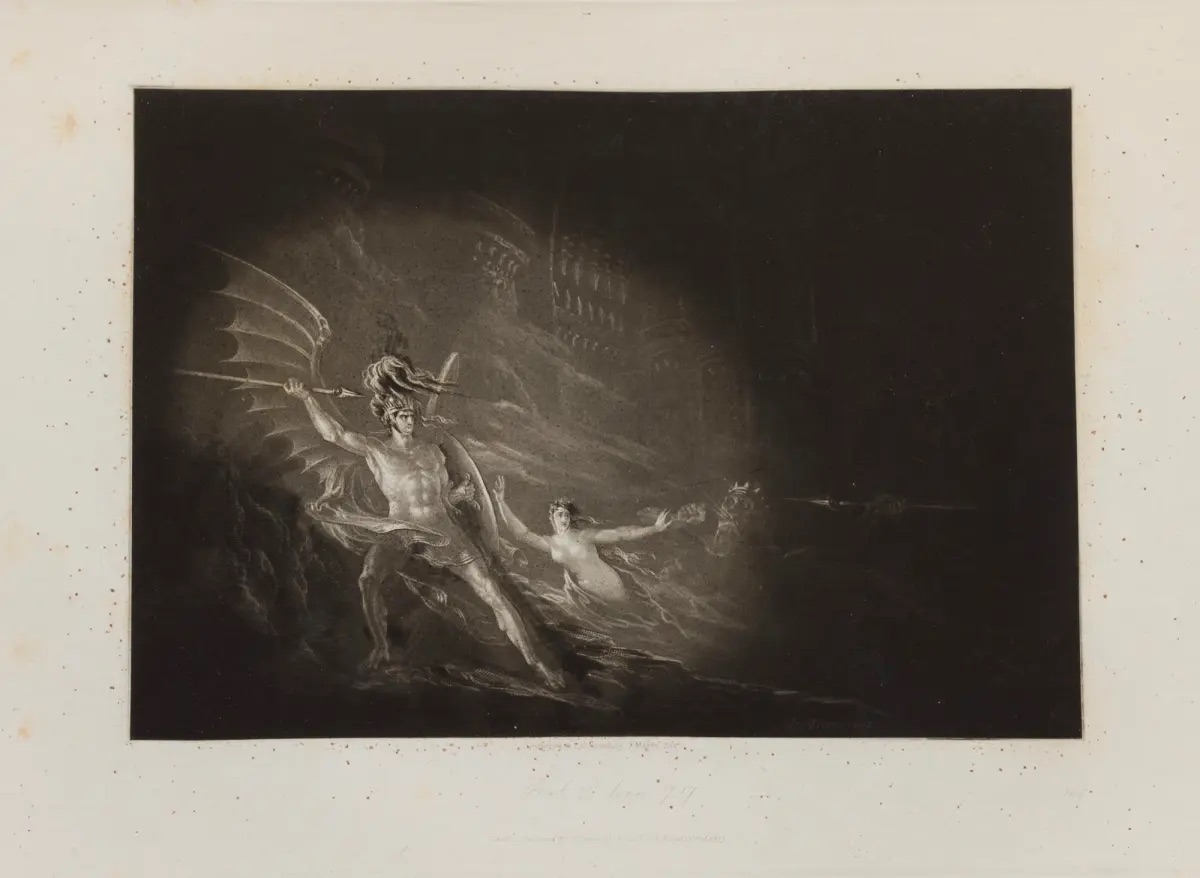
Satan, Sin and Death
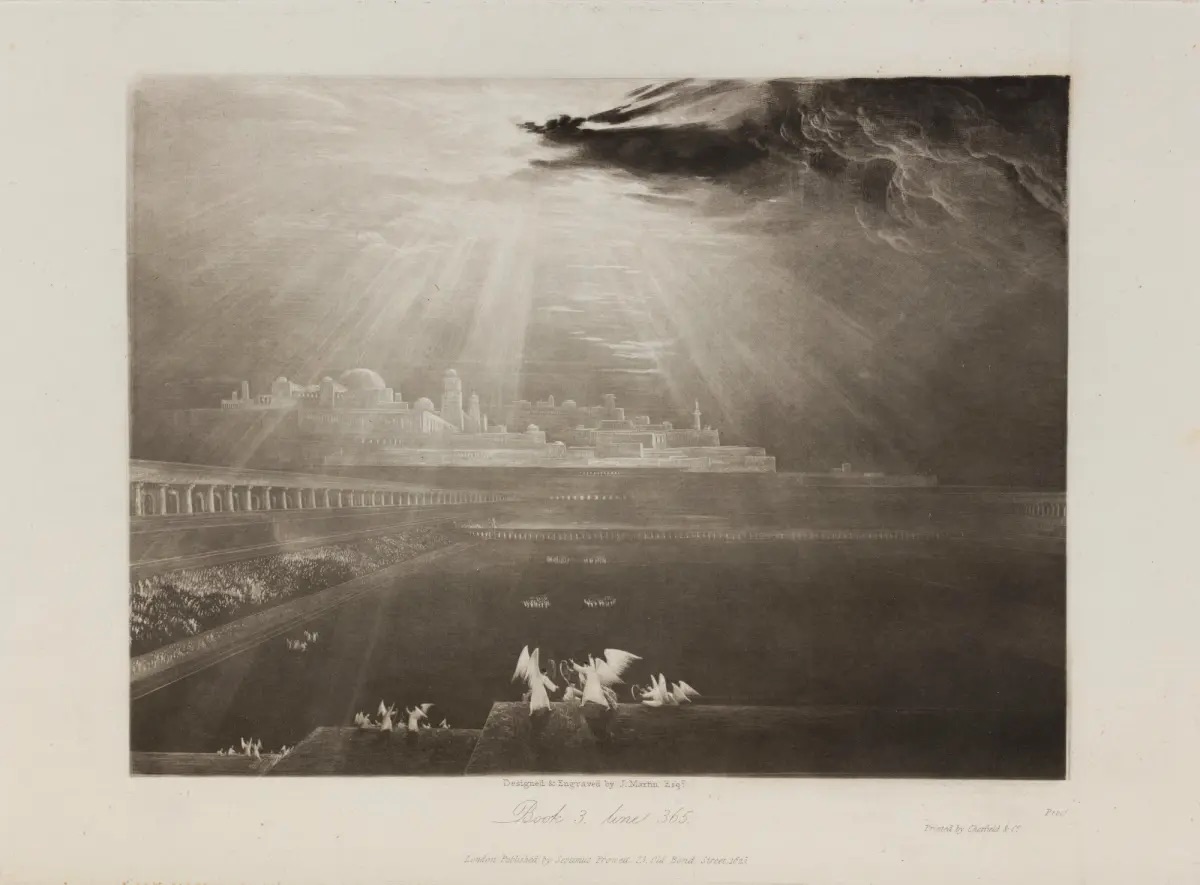
Angels singing in heaven
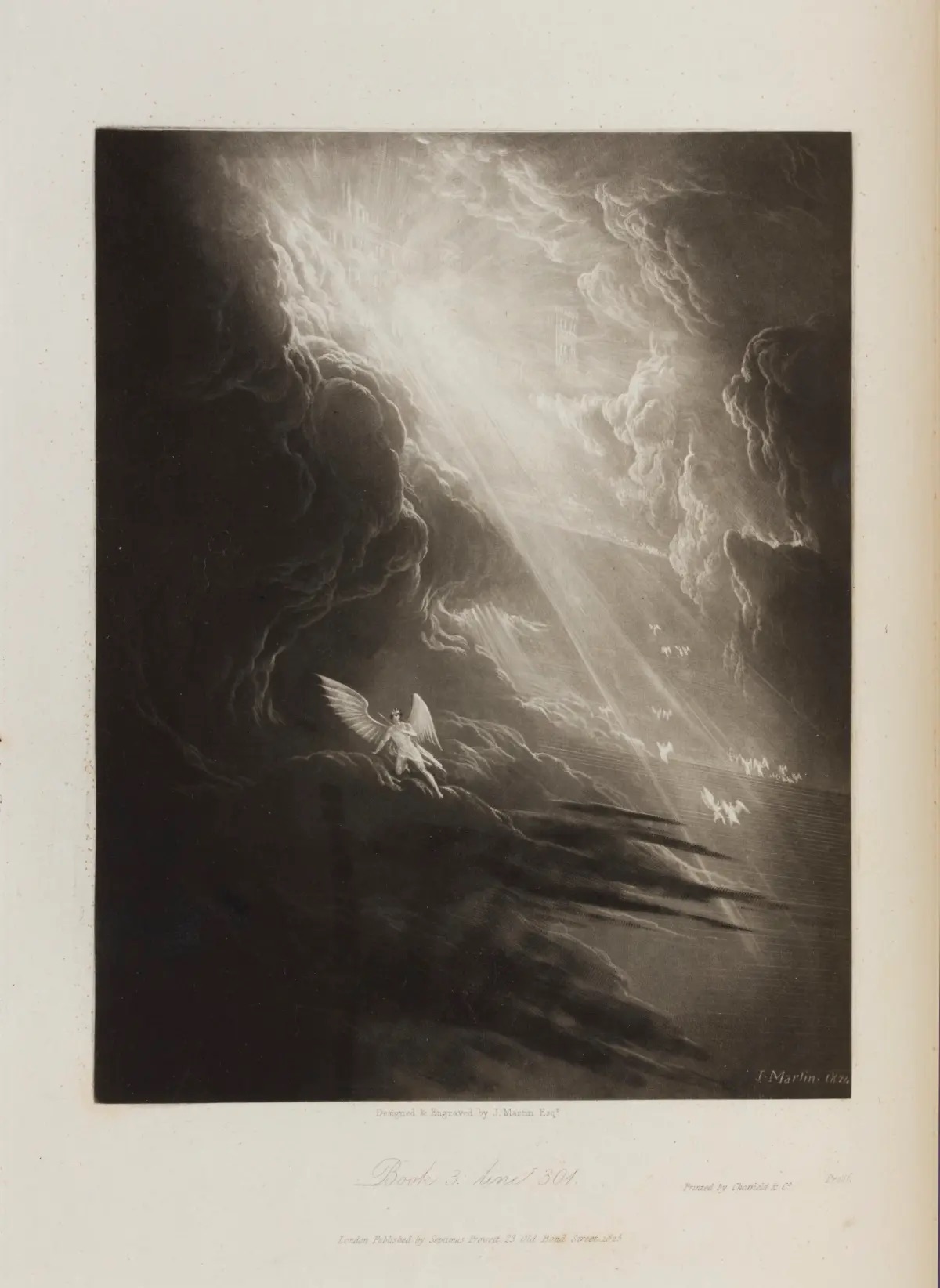
Satan viewing the ascent to Heaven

Satan observes Adam and Eve in the garden of Eden
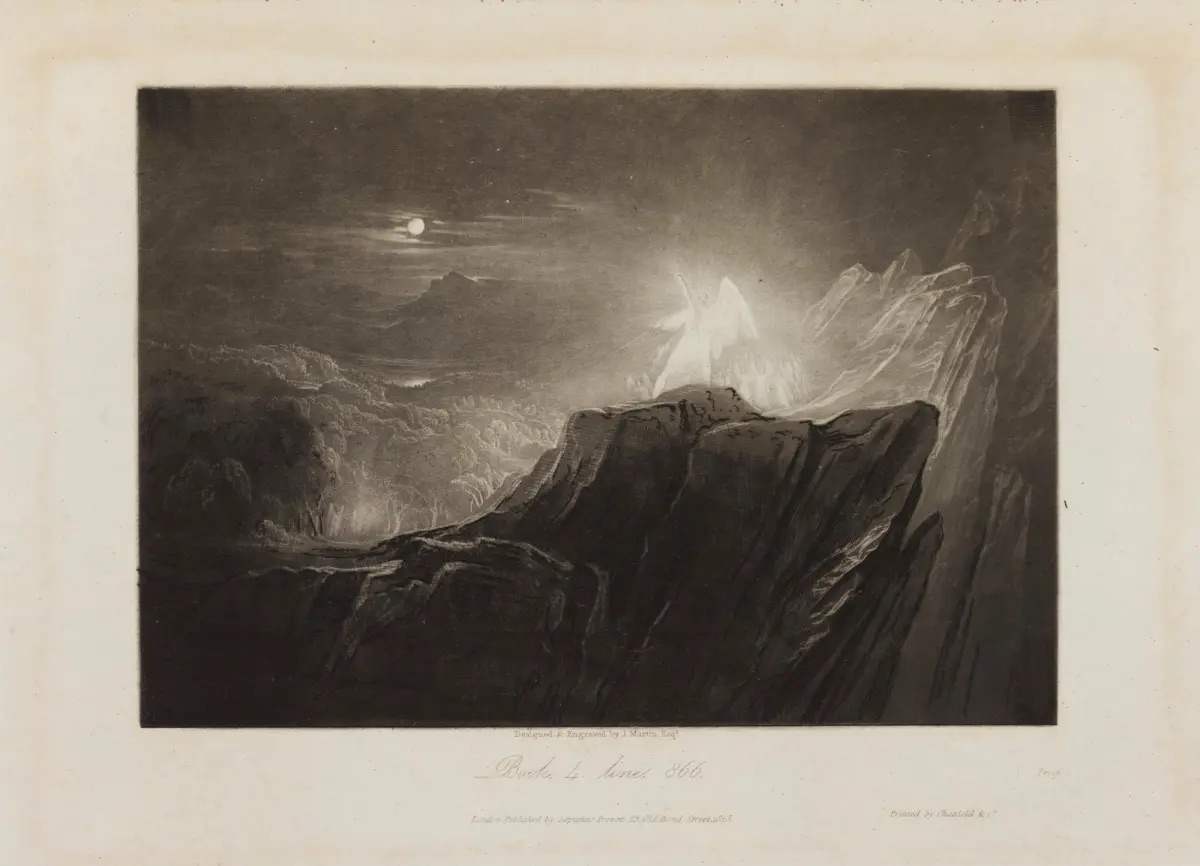
Gabriel awaits the arrival of Satan

Adam berates Eve
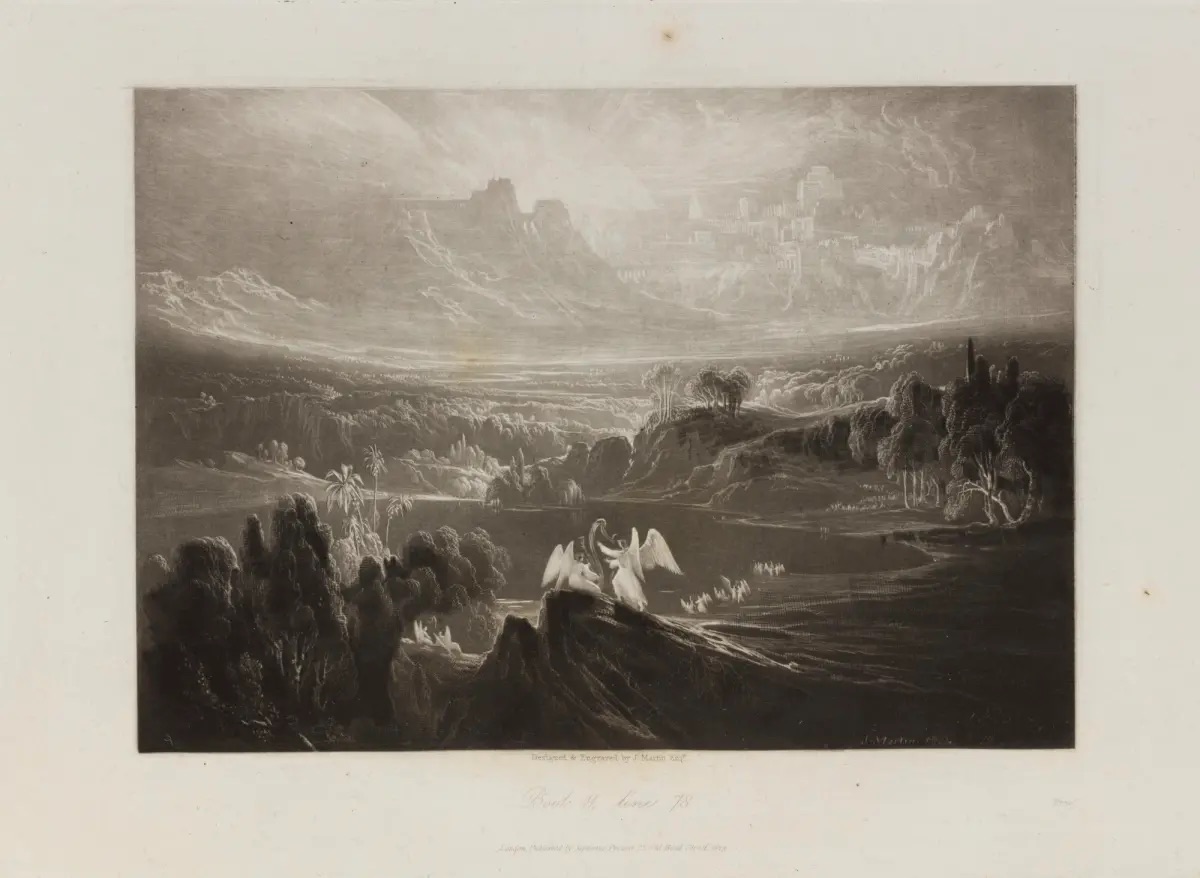
Angels herald the word of God
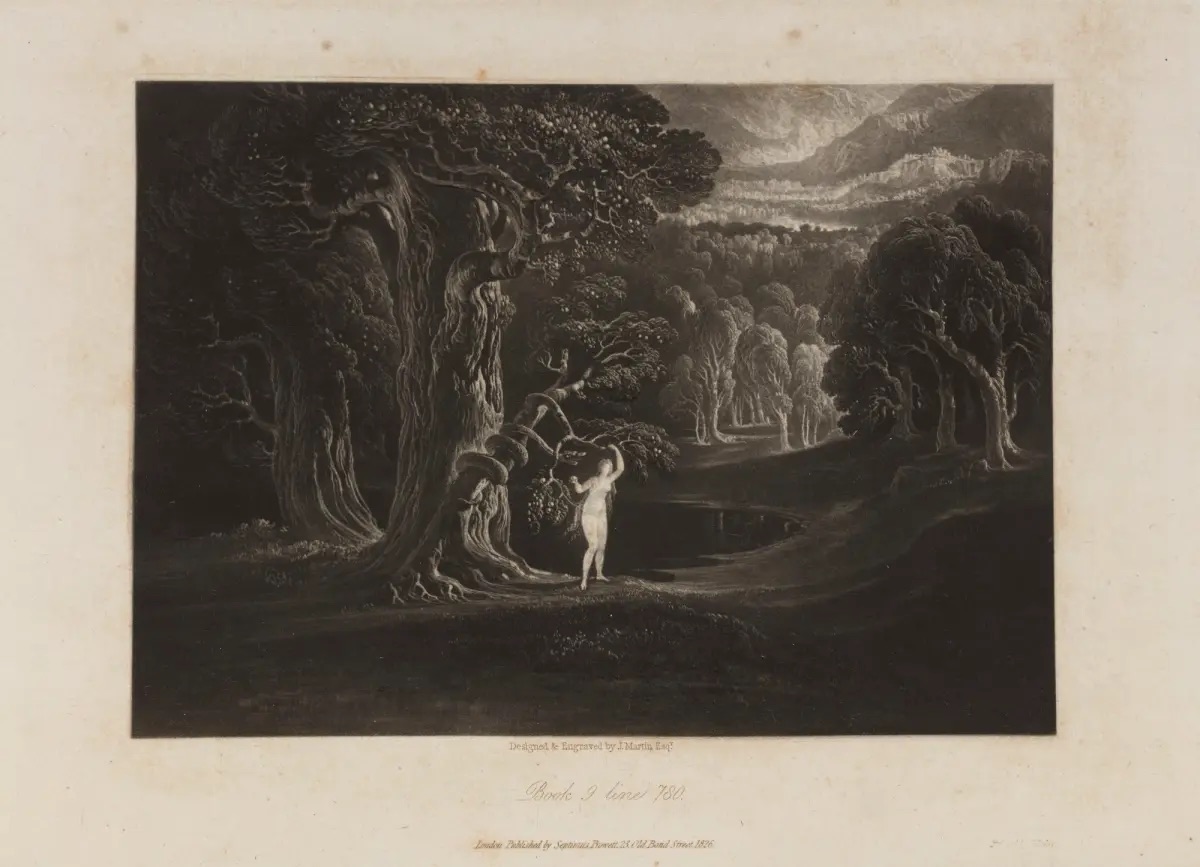
Eve eats the forbidden fruit
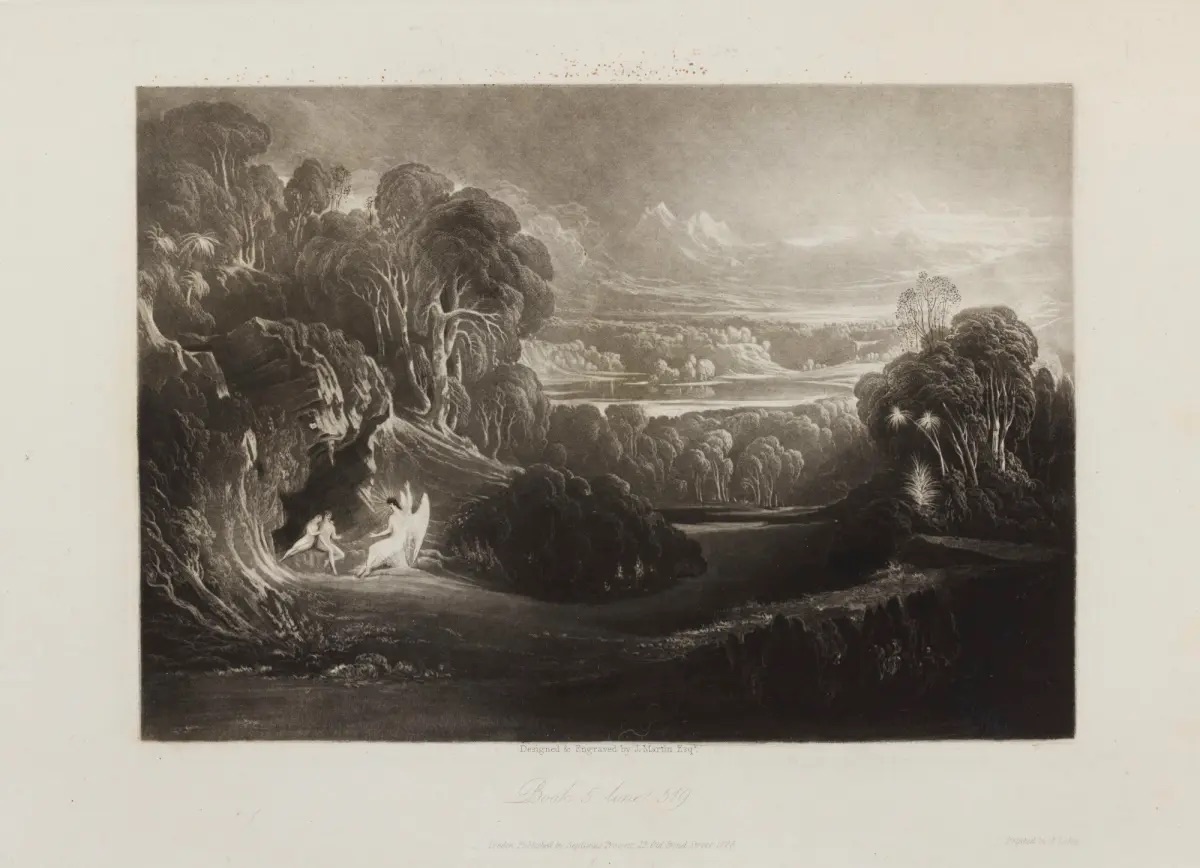
Raphael delivers his message to Adam and Eve
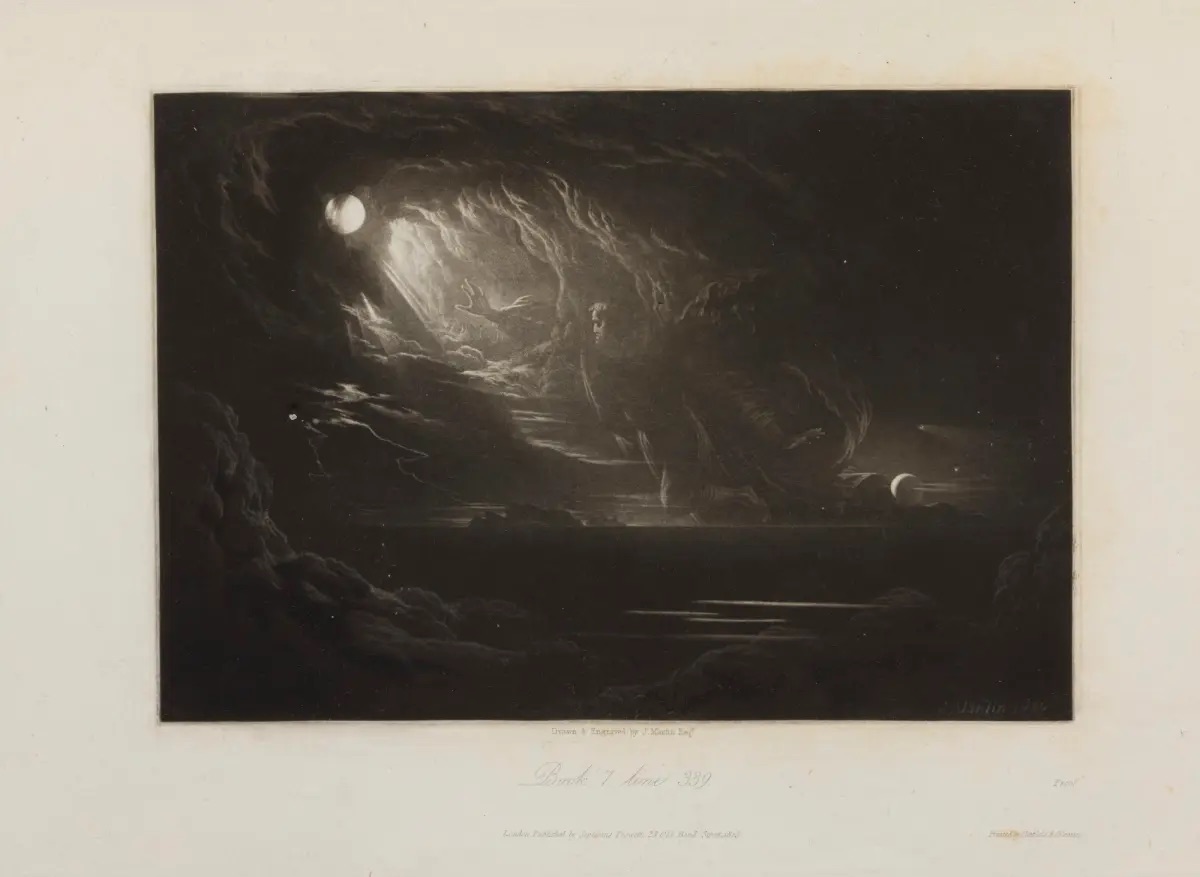
The creation of light
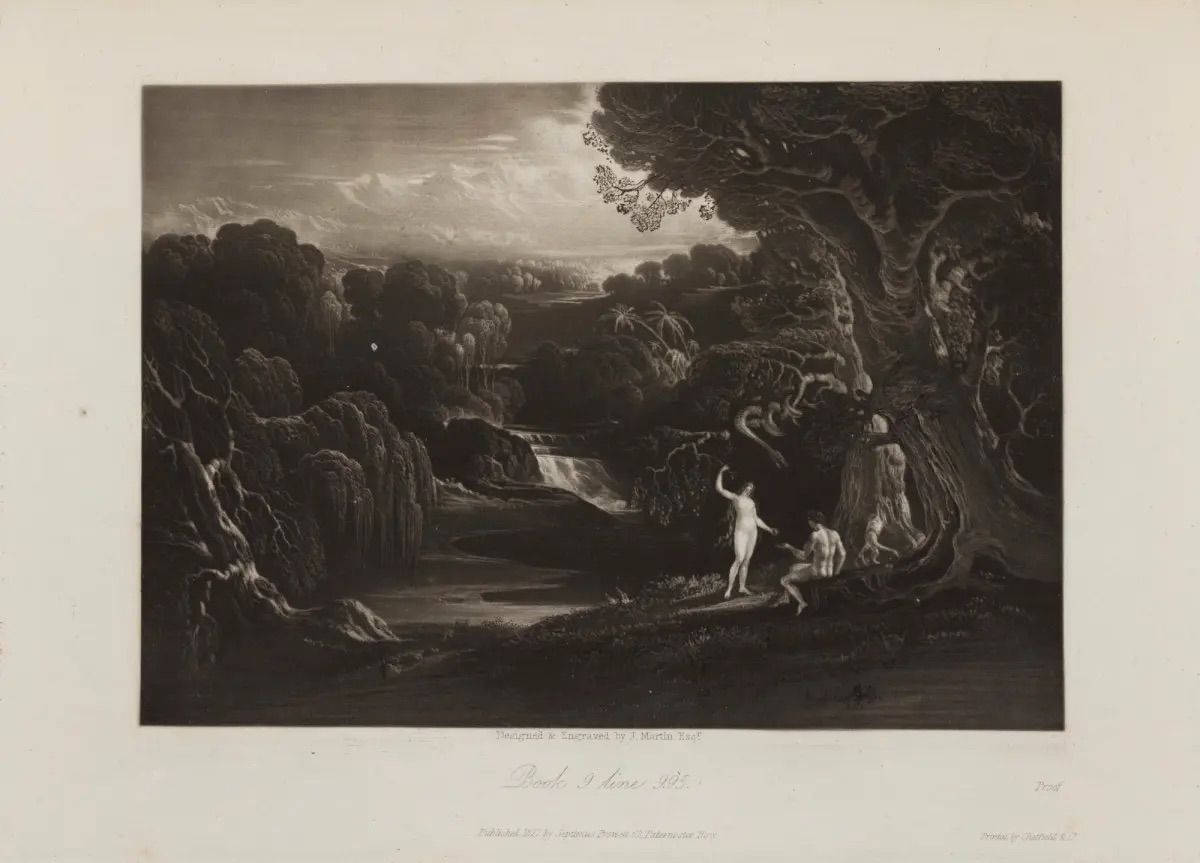
Eve presenting the forbidden fruit to Adam
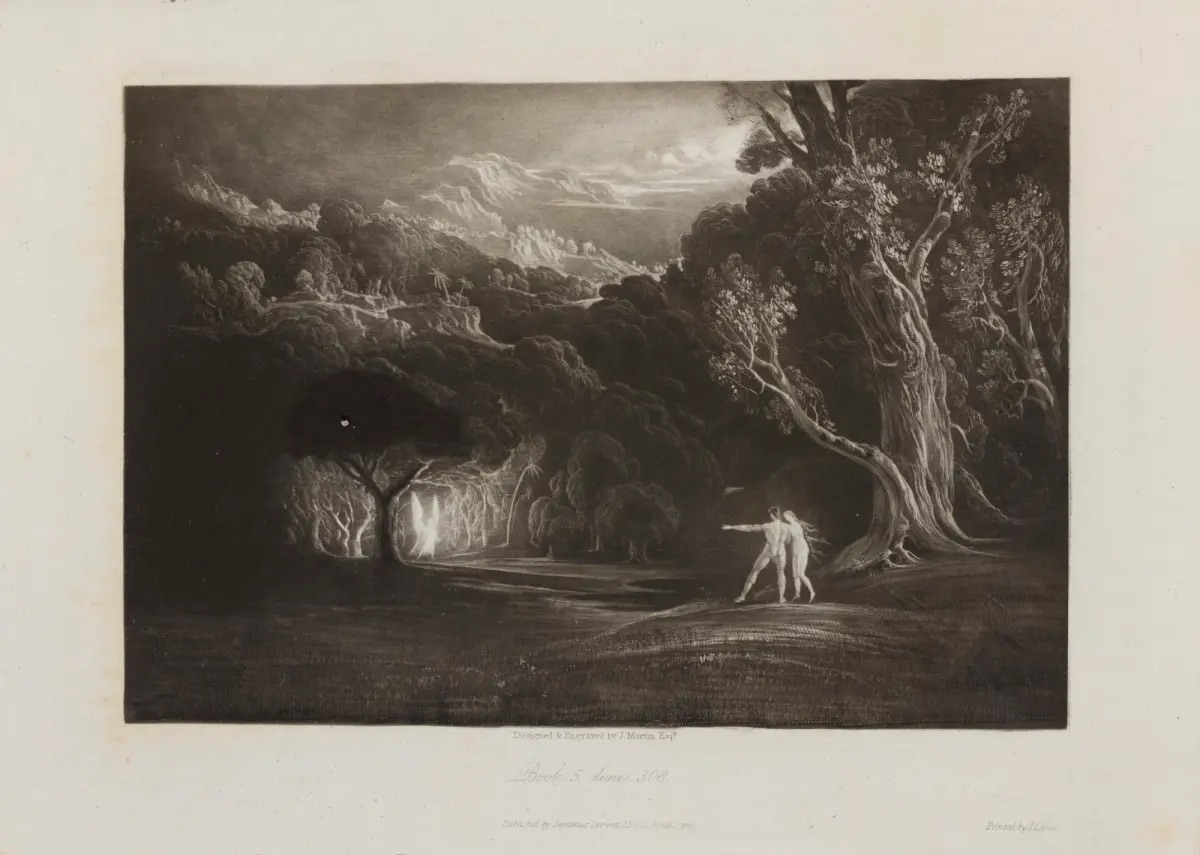
Adam and Eve behold the angel Raphael
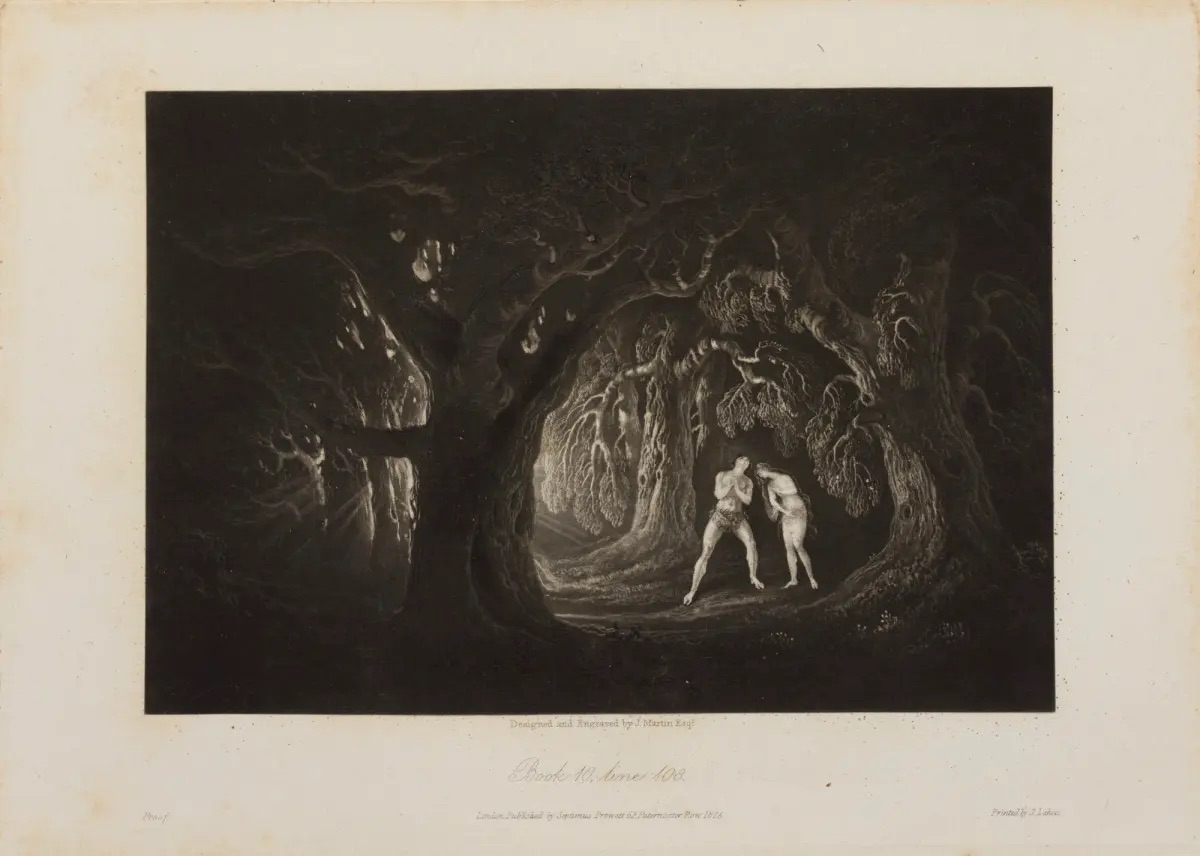
Adam and Eve emerge from the trees
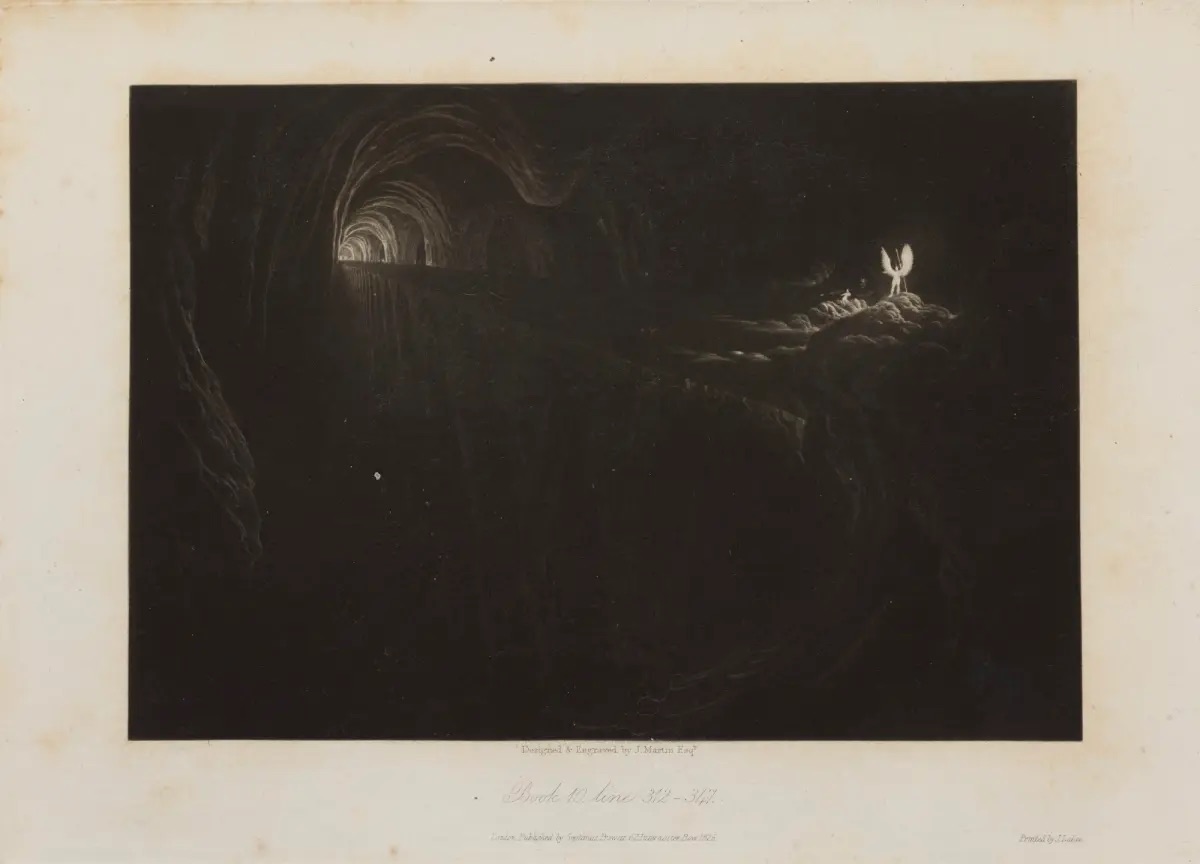
Bridge over Chaos
Would you like to support Flashbak?
Please consider making a donation to our site. We don't want to rely on ads to bring you the best of visual culture. You can also support us by signing up to our Mailing List. And you can also follow us on Facebook, Instagram and Twitter. For great art and culture delivered to your door, visit our shop.

